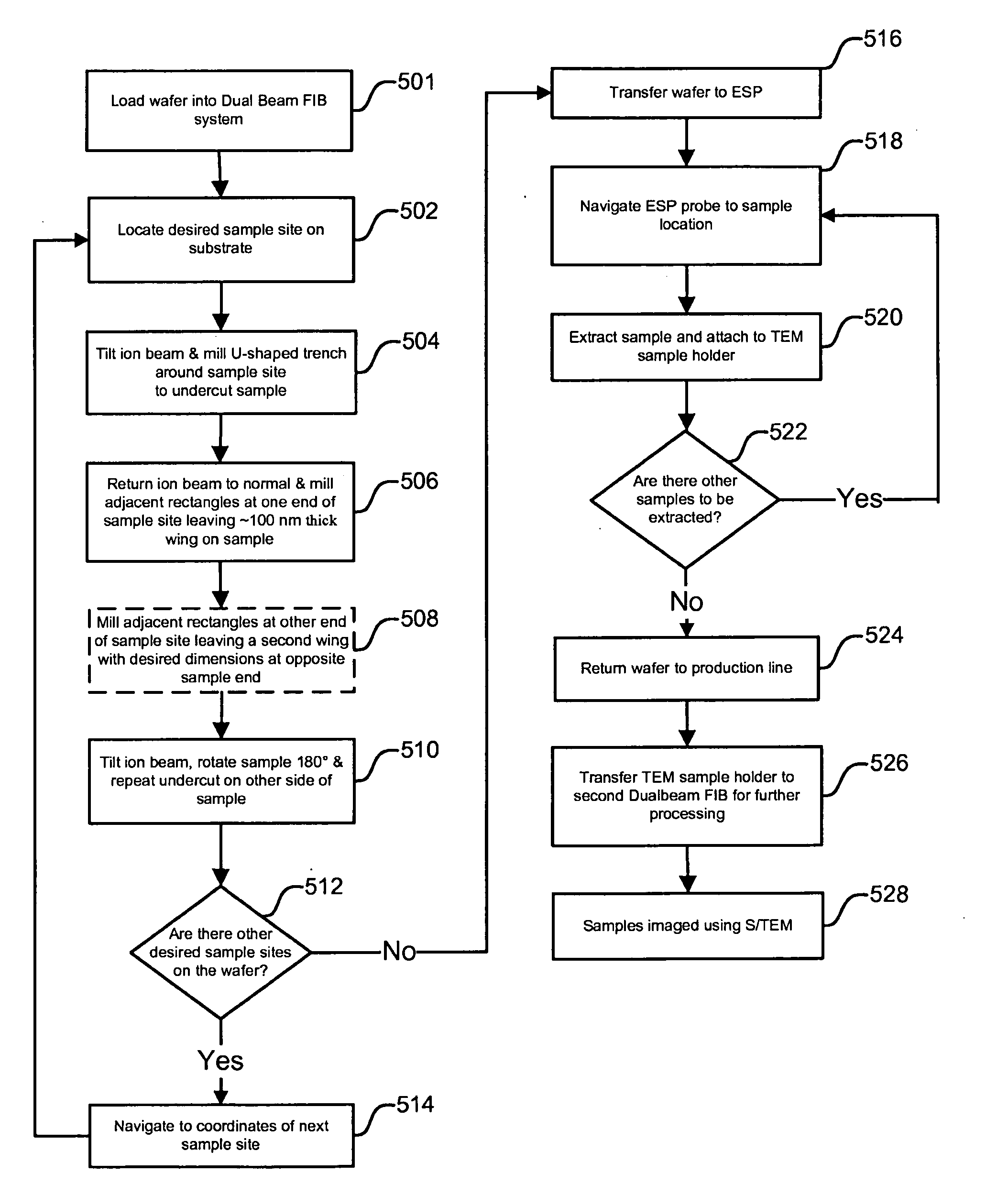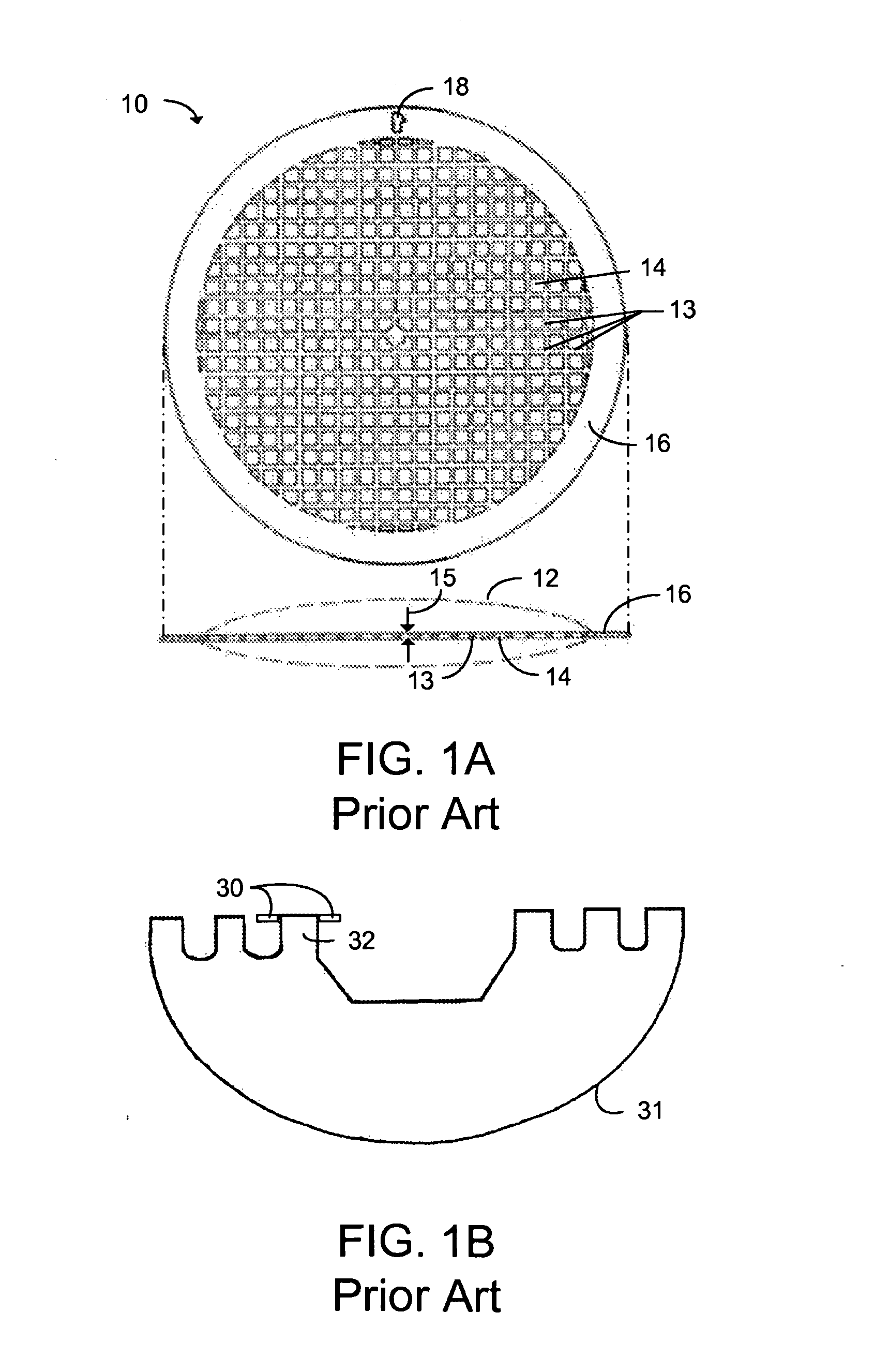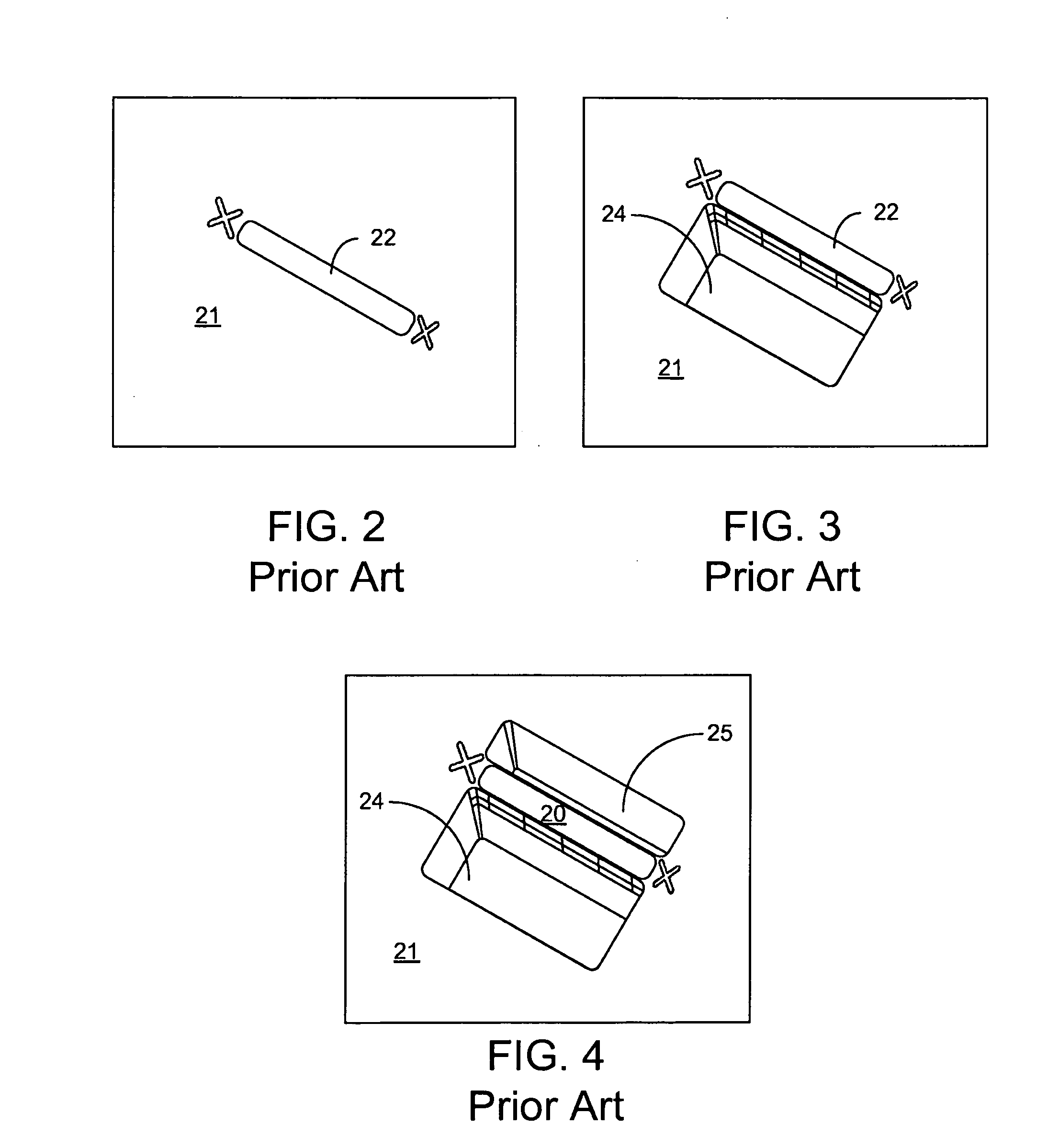Method and apparatus for sample extraction and handling
a sample and extraction method technology, applied in the field of sample extraction and handling, can solve the problems of destroying much consuming time, and affecting the quality of the original sample, and achieve the effect of increasing the throughput of tem analysis and less labor
- Summary
- Abstract
- Description
- Claims
- Application Information
AI Technical Summary
Benefits of technology
Problems solved by technology
Method used
Image
Examples
Embodiment Construction
[0049]Preferred embodiments of the present invention provide a fully or partially automated process for TEM sample extraction and handling. Increased throughput and a less labor-intensive process will allow S / TEM based metrology to be better utilized in a wafer fabrication facility to provide rapid feedback to process engineers to troubleshoot or improve processes.
[0050]A preferred method or apparatus of the present invention has many novel aspects, and because the invention can be embodied in different methods or apparatuses for different purposes, not every aspect need be present in every embodiment. Moreover, many of the aspects of the described embodiments may be separately patentable.
[0051]In a preferred embodiment of the present invention, one or more lamellae are first created on a wafer or other substrate. Preferably, a number of lamellae can be created using an automated ex-situ process where a lamella is thinned in place before removal as described in U.S. Provisional App....
PUM
 Login to View More
Login to View More Abstract
Description
Claims
Application Information
 Login to View More
Login to View More - R&D
- Intellectual Property
- Life Sciences
- Materials
- Tech Scout
- Unparalleled Data Quality
- Higher Quality Content
- 60% Fewer Hallucinations
Browse by: Latest US Patents, China's latest patents, Technical Efficacy Thesaurus, Application Domain, Technology Topic, Popular Technical Reports.
© 2025 PatSnap. All rights reserved.Legal|Privacy policy|Modern Slavery Act Transparency Statement|Sitemap|About US| Contact US: help@patsnap.com



